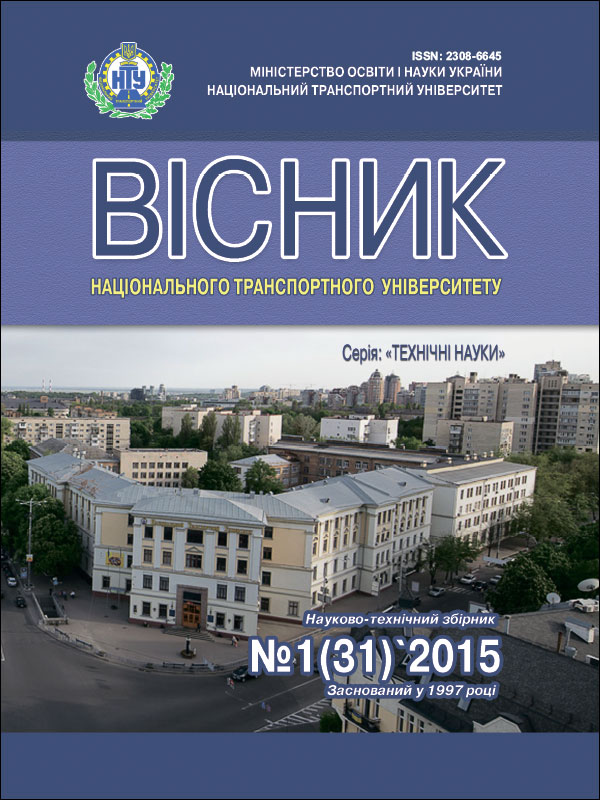EFFECT OF CONTAMINATANTS IN FUEL USED IN DIESEL ENGINES ON FUEL LUBRICITY
ABSTRACT
Krzemiński A., Szymczuk P. Effect of contaminatants in fuel used in diesel engines on fuel lubricity. Visnyk of National Transport University. Series «Technical sciences». Scientific and Technical Collection. – Kyiv: National Transport University, 2021. – Issue 3 (50).
During the production, transportation, distribution, use or storage of diesel fuel, liquid and solid substances get into it, negatively affecting their operational properties. These substances are called pollutants. At the same time, impurities are removed from the fuel by filtration, dehydration and settling. The total amount is the result of the cleaning process.
The performance of the aforementioned tasks of the fuel system is mainly determined by the corresponding physicochemical properties of the diesel fuel. The properties of the fuel that affect the functioning of the fuel system are as follows: masticity, viscosity, density, rheological indicators at low temperatures.
Failure to comply with the requirements for oil and the content of impurities in diesel fuel can quickly damage injection equipment, which is sensitive to changes in fuel quality.
By nature, contaminants of diesel fuel include: dust particles, water, corrosion products of pipelines and tanks, microorganisms, resinous substances.
The requirements for diesel oils contained in the PN-EN 590 standard determine the permissible contamination level. The maximum content of solid pollutants for diesel engines is 24 mg / kg. This value is the amount of solids released when filtering a given amount of fuel through a nitrocellulose filter, the pore size of which is less than 0.8 microns. The fifth edition of the World Fuel Charter, September 2013, contains an additional criterion for the particle size of particulate pollutants. A section introduced concerns particles larger than 4 µm, 6 µm and 14 µm. According to the assumption of the division of molecules into corresponding groups of sizes, the purity of diesel fuel is determined by three numbers. These, in turn, correspond to the number of molecules contained in the above size ranges.
TDue to the possibility of microbial growth, filter blocking or increased galvanic corrosion, it is assumed that the water in diesel fuel should not be in a separate phase. The permitted water content in diesel fuel is 200 mg / kg. The release of sulfur compounds into the atmosphere increases the concentration of other toxic components in the exhaust gases of vehicles with compression inflammation engines. Sulfur improves the masticability of diesel fuel, but due to environmental protection, its content is systematically reduced. Modern standards for these fuels allow sulfur content up to 10 mg / kg. The content of impurities can be defined as the volume (v / v) or mass (w / m) fraction of impurities contained in a unit volume or mass of the test liquid. There are many methods for determining the content of various types of impurities, from the simplest - visual, through quantitative and qualitative tests, to chemical tests.
Four samples of diesel fuel were tested. Diesel (ON) was the baseline. The rest of the samples underwent an accelerated contamination procedure. The pollutants used in the study were: water, gasoline, solid powder abrasive substances consisting of silicon carbide grains SiC (95 - 98%) and impurities Fe2O3, Al2O3, CaO, SiO2, MnO2, granulation 4.5 μm ± 1%.
In a baseline test of unstained diesel fuel, a capture force Poz of 930 N was obtained. Capture occurred after 2 s of the test. The sample, a mixture of diesel and gasoline, showed a slight decrease in Poz strength compared to baseline breakdown. The difference was 3%. The time over which the entrainment was observed was similar to the time taken for the baseline sample. During the examination of a diesel fuel sample contaminated with solid particles of abrasive powder, there was a sharp decrease in the gripping force by as much as 97% relative to the result obtained for the base sample, and the beginning of gripping was less than 0.5 s. Tests with a mixture of diesel fuel and water showed a 15% decrease in gripping force, and the time was also 2 s.
After comparing the results obtained, it can be concluded that all the impurities used influenced the force of the gripping load. Different results indicate different degrees of influence of certain pollutants on the makability of diesel oil.
KEY WORDS: DIESEL, POLLUTANTS, LUBRICANT PROPERTIES, GRIP, GRIP STRENGTH.
REFERENCES
- PN-76/C-04147 Przetwory naftowe. Badanie własności smarnych olejów i smarów.
- PN-EN 590:2009 Paliwa do pojazdów samochodowych. Oleje napędowe. Wymagania i metody badan.
- PN-EN ISO 20623:2010 Przetwory naftowe i produkty podobne. Oznaczanie właściwości przeciwzatarciowych i przeciwzużyciowych cieczy. Metoda czterokulowa (warunki europejskie).
- Baczewski K., Kałdoński T. (2004): Paliwa do silników o zapłonie samoczynnym, Wydawnictwa Komunikacji i Łączności, Warszawa 2004
- Jakóbiec J., Stanik W., Mazanek A. (2004): Olej napędowy według Światowej Karty Paliw -wydanie piąte wrzesień 2013 r., AGH – Akademia Górniczo-Hutnicza w Krakowie, Instytut Nafty i Gazu, Kraków 2004.
- Michalczewski R., Szczerek M., Tuszyński W., Wulczyński J. (2009): Aparat czterokulowy do badania właściwości przeciwzużyciowych, przeciwzatarciowych i powierzchniowej trwałości zmęczeniowej z możliwością podgrzewania środka smarowego, Tribologia 2009
- Worldwide Fuel Charter Fifth Edition, 2013
AUTHORS
KRZEMIŃSKI Artur, Rzeszów University of Technology, Department of Automotive Vehicles and Transport Engineering, e-mail: artkrzem@prz.edu.pl, tel.: +48 17 865 2550, 35-959, Rzeszow, Poland, Av. Powstancow Warszawy 12, orcid.org/0000-0003-4733-7308.
SZYMCZUK Paulina, Rzeszów University of Technology, Department of Automotive Vehicles and Transport Engineering, e-mail: p.szymczuk@prz.edu.pl, tel.: +48 17 865 2550, 35-959, Rzeszow, Poland, Av. Powstancow Warszawy 12, orcid.org/0000-0002-3116-5241.
REVIEWERS
Balawender Krzysztof, PhD in Technical Sciences, associate professor, Rzeszow University of Technology, associate professor of the motor vehicles and transport engineering department, Rzeszow, Poland.
Posviatenko E.K., Doctor of Technical Sciences, professor, National Transport University, professor of the production, repair and materials science department, Kyiv, Ukraine.
Article language: Polish
Open Access: http://publications.ntu.edu.ua/visnyk/50/188-197.pdf
Print date: 29.09.2021
Online publication date: 30.10.2021
